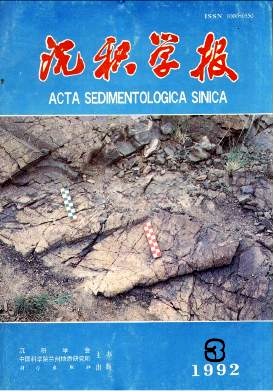Developments in Reservoir Sedimentology of Continental Clastic Rocks in China
- Publish Date: 1992-09-10
Abstract: Clastic rocks as hydrocarbon reservoir are prevailed overwhelmingly in the continental lake basins. The smaller scales in basin area and water body of lake lead to more serious heterogeneities of interlayer, areal, inlayer and micropore scales in the continental clastic reservoirs than in the marine analogues. Eight clastic filling models can be distinguished in the lake basins depended on the tectonic setting, the evolutional stage when they deposited and the fluctuation of lake level. Under the background of long distance between the sediment source area and the depocenter and the gently gradient slope, the loniitudianl alluvial fan-braided river-meandering river-delta filling model is developed along the long axis, parallel to the strike of tectonic framework, of a lake basin, while the transversal alluvial fan -fan delta-sublacustrine fan filling model is developed in the steep, deeply faulted side along the short axis due to the short distance between the sediment source area and the depocenter and the steeply gradient slope. These two filling models can be regarded as the end-members in the lake basins, among them there are a series of transitional filling patterns developed. Some particular models can also be observed: the fluvial sandbodies all most cover the overall basin during the dying stage, and the sandflat prevails in the littoral environment during the evaporated stage in a saline lake. The clastic reservoirs deposited in different environments are distinctively characterized by their own heterogeneities. Alluviat fan conglomerates and conglomeratic rocks are characterized by the complicated pore-texiure in terms of its bimodal grain texture, also the occurrence of seive and debris flow deposits can much worsen the reservoir heterogeneity. The fining upwards in grain size and narrow width of the fluvial sandbody reser-voir、 bring about a low recovery efficient in waterflooding, however, often a high productivity can be found. A deltaic sandbody just has an opposite reservoir heterogeneity to the fluvial one, and always a high recovery efficient in waterflooding can be got. The beach and bar sandbodies are no significant volumetrically in a lake basin, however, its high productibity and homogeneous reservoir properties have been noticed interestingly In sublacustrine fan environment, the sandbodies, which could be served as hydrocarbon reservoir are mainly of channelized deposit in the middly fan and fault-bounded trough subenvironments and of lenticular deposit in front area. Through outcrop work to enrich a quantified geological konwledge base for building the geological models of continental reservoirs will be a main target facing to the reservoir sedimentologists
| Citation: | Qiu Yinan. Developments in Reservoir Sedimentology of Continental Clastic Rocks in China[J]. Acta Sedimentologica Sinica, 1992, 10(3): 16-24. |






 DownLoad:
DownLoad: